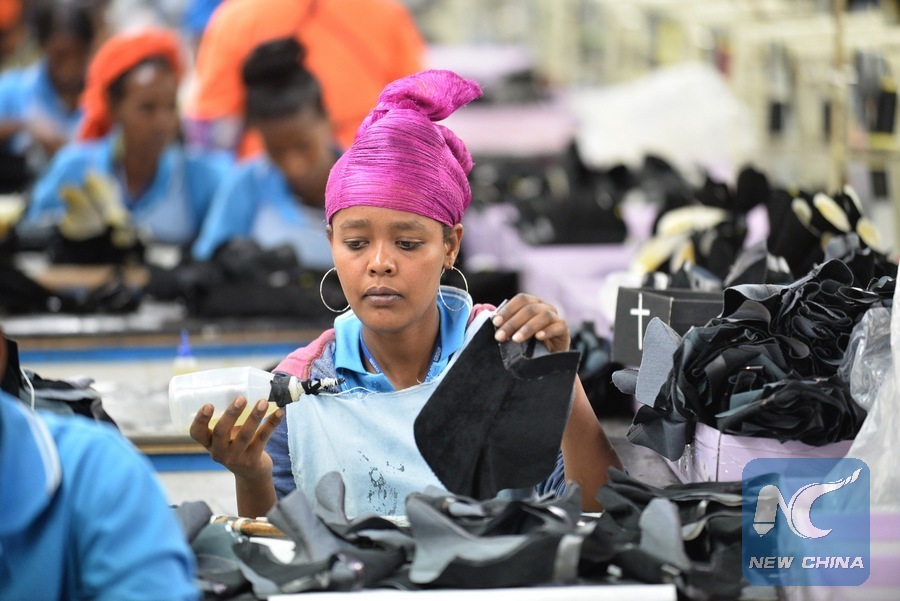
Photo taken on Dec. 7, 2018 shows the factories inside the Eastern Industrial Zone (EIZ) in the south of Addis Ababa, Ethiopia. (Xinhua/Zhang Yu)
ADDIS ABABA, Jan.3 (Xinhua) -- Ethiopia is investing billions of dollars into the development of dozens of industrial parks with the ambition of becoming Africa's manufacturing hub.
The East African nation, which has invested about 1.3 billion U.S. dollars in the construction of around a dozen industrial parks, plans to increase the number of operational industrial parks from the current five to around 30 by 2025.
In the meantime, the flagship Chinese-built Hawassa industrial park has helped the country earn 38 million U.S. dollars in export revenues in the last two years.
The Hawassa industrial park has also created job opportunities for 23,000 Ethiopians, who are also receiving practical skills training to build their capacities, according to Mekonen Hailu, Public Relations Director of Ethiopia Investment Commission (EIC).

A worker goes about her work at Bole Lemi Industrial Park in Addis Ababa, capital of Ethiopia, April 6, 2017. (Xinhua/Michael Tewelde)
Lelise Neme, CEO of Ethiopia Industrial Park Development Corporation (IPDC), told Xinhua that Ethiopia has so far built and commissioned five industrial parks and with the anticipated commissioning of six more industrial parks in 2018/19, further boosting Ethiopia's industrialization ambitions.
Kilinto, Dire Dawa, Bole Lemi 2, Bahir Dar, Arerti and Debre Birhan industrial parks are expected to be commissioned before the end of the current 2018/19 fiscal year, said Neme.
Debre Birhan and Arerti industrial parks are being constructed by China Communications Construction Company, while Dire Dawa and Bahir Dar industrial parks are being constructed by China Civil Engineering Construction Corporation.
Kilinto and Bole Lemi 2 industrial parks are currently being constructed by China Tiesiju Civil Engineering Group and CGC Overseas Construction Group respectively.
Ethiopia plans to increase the number of operational industrial parks from the current five to around 30 by 2025, as part of its efforts to make the country a light manufacturing hub and lower-middle-income economy in the same period.

